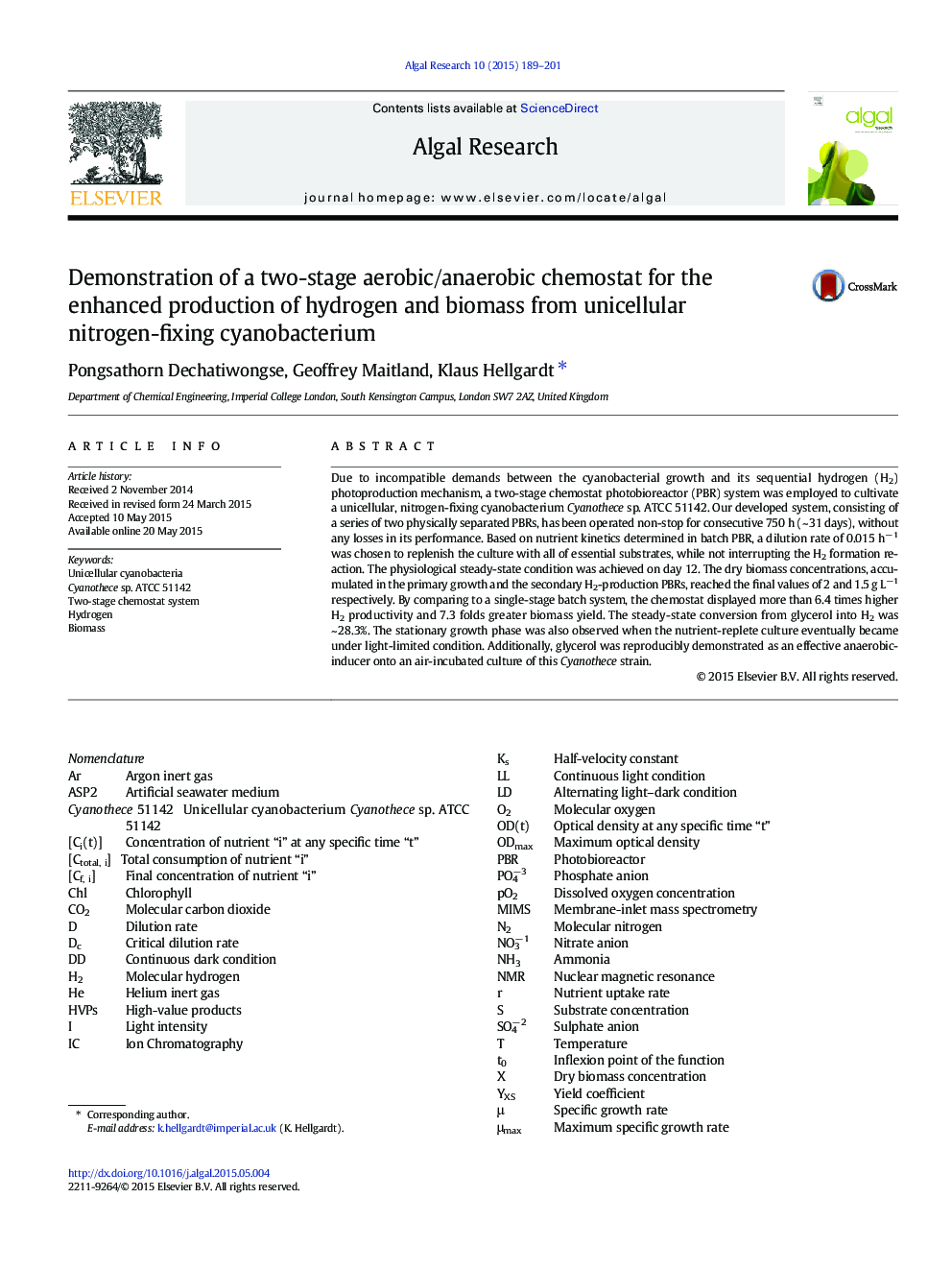| Article ID | Journal | Published Year | Pages | File Type |
|---|---|---|---|---|
| 1742023 | Algal Research | 2015 | 13 Pages |
•Two-stage chemostat system as a promising platform to deliver co-production of H2 and cyanobacterial biomass•More than 1 month of bioreactor operation without any losses in its performance•More than 6.4 and 7.3 times higher H2 and biomass yields, compared to a batch system•Glycerol serves as an effective anaerobic-inducer
Due to incompatible demands between the cyanobacterial growth and its sequential hydrogen (H2) photoproduction mechanism, a two-stage chemostat photobioreactor (PBR) system was employed to cultivate a unicellular, nitrogen-fixing cyanobacterium Cyanothece sp. ATCC 51142. Our developed system, consisting of a series of two physically separated PBRs, has been operated non-stop for consecutive 750 h (~ 31 days), without any losses in its performance. Based on nutrient kinetics determined in batch PBR, a dilution rate of 0.015 h− 1 was chosen to replenish the culture with all of essential substrates, while not interrupting the H2 formation reaction. The physiological steady-state condition was achieved on day 12. The dry biomass concentrations, accumulated in the primary growth and the secondary H2-production PBRs, reached the final values of 2 and 1.5 g L−1 respectively. By comparing to a single-stage batch system, the chemostat displayed more than 6.4 times higher H2 productivity and 7.3 folds greater biomass yield. The steady-state conversion from glycerol into H2 was ~ 28.3%. The stationary growth phase was also observed when the nutrient-replete culture eventually became under light-limited condition. Additionally, glycerol was reproducibly demonstrated as an effective anaerobic-inducer onto an air-incubated culture of this Cyanothece strain.
